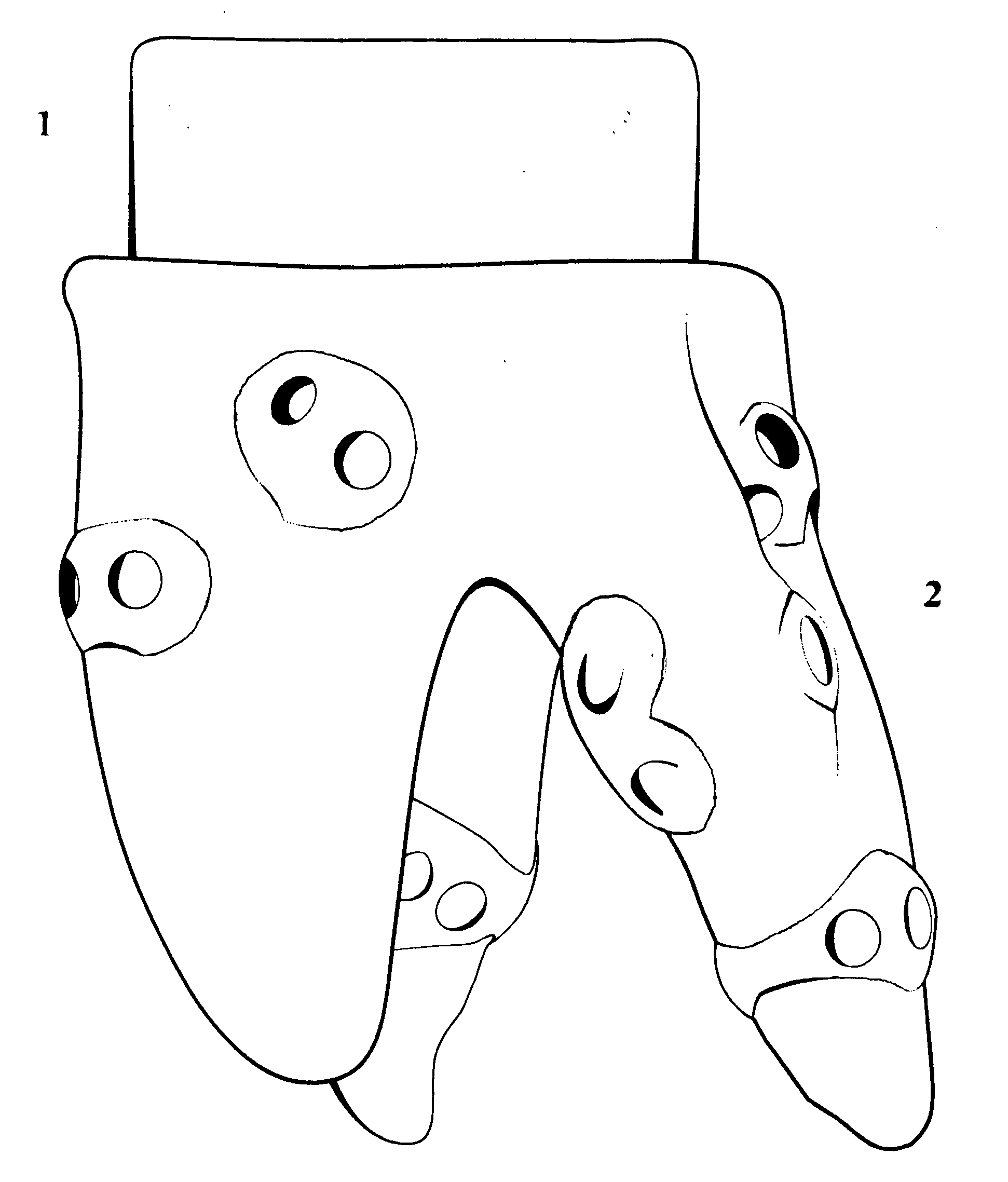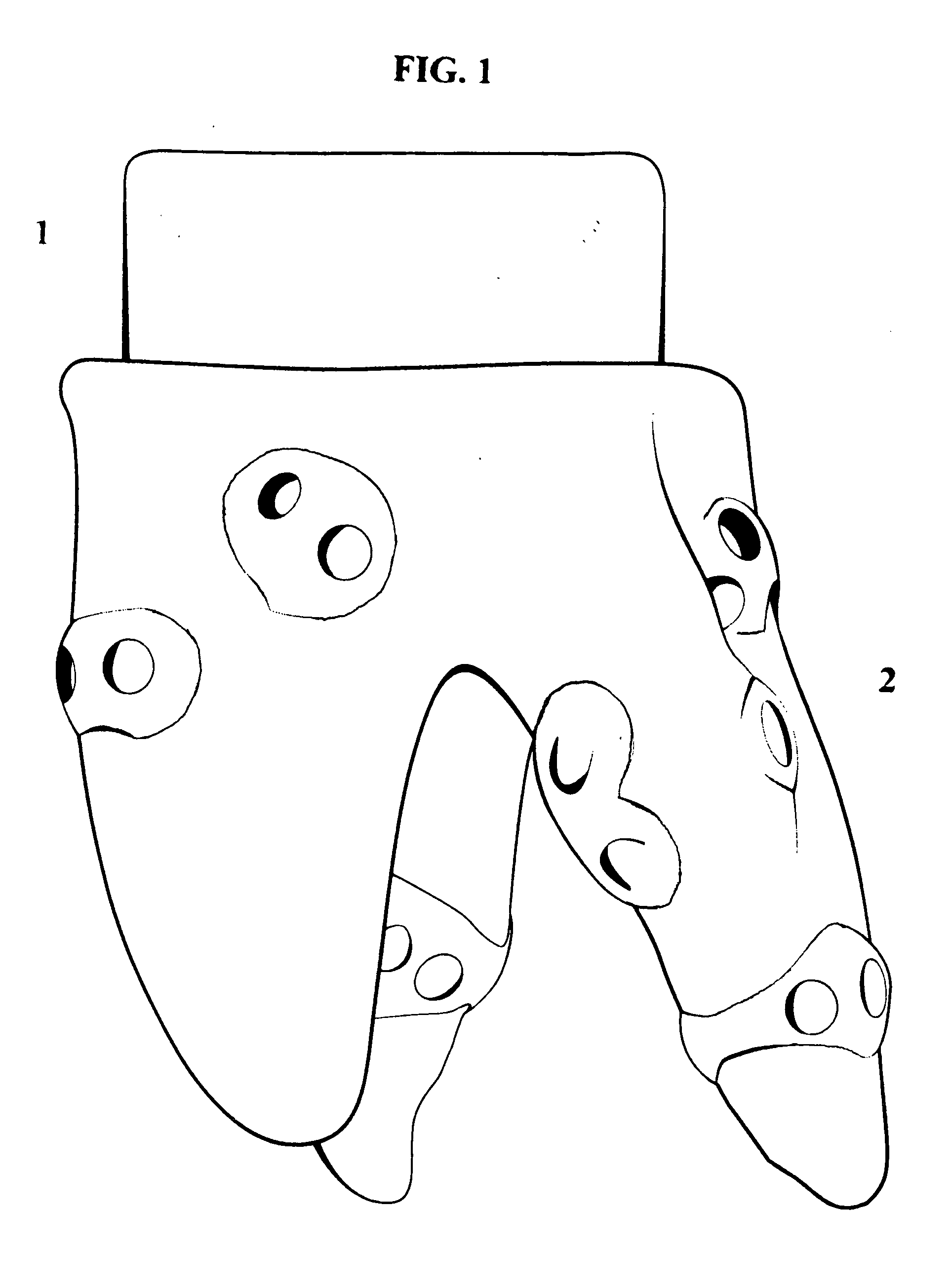BioRoot(R) anatomic endosseous dental implant
a dental implant and anatomic technology, applied in dental implants, dental surgery, medical science, etc., can solve the problems of root socket bone fracture or breakage, restricted use of such devices, and inability to use buccal/lingual sides, etc., to minimize shear forces during function, relieve a great deal of stress, and be convenient to us
- Summary
- Abstract
- Description
- Claims
- Application Information
AI Technical Summary
Benefits of technology
Problems solved by technology
Method used
Image
Examples
Embodiment Construction
[0022]BioRoot® anatomic endosseous dental implant begins as a solid block of 3% MOL yttria-stabilized, zirconia oxide (Y3ZrO2), a biocompatible ceramic material while in the green state (non-sintered). Utilizing acquired imaging ranging from a visual exam, x ray, cone beam scan, or MRI, exacting tooth and tooth root socket measurements are made and the data is fed into a computer along with the actually-extracted tooth as a model, and by way of a 3D scanner, the operator will make manipulations to the virtual tooth by removing minor surface defects and adding retentive devices (See drawings FIG. 1, FIG. 2, FIG. 3A, and FIG. 3B). These retentions will be placed on all four tooth faces: mesial, distal, and buccal, lingual, ranging in height from 2 nm to 2 mm. When the data has been fully manipulated, it is fed into milling machines that will then mill the implant blank to produce the BioRoot® anatomic endosseous dental implant with a custom built abutment and a number of retentions wi...
PUM
 Login to View More
Login to View More Abstract
Description
Claims
Application Information
 Login to View More
Login to View More - R&D
- Intellectual Property
- Life Sciences
- Materials
- Tech Scout
- Unparalleled Data Quality
- Higher Quality Content
- 60% Fewer Hallucinations
Browse by: Latest US Patents, China's latest patents, Technical Efficacy Thesaurus, Application Domain, Technology Topic, Popular Technical Reports.
© 2025 PatSnap. All rights reserved.Legal|Privacy policy|Modern Slavery Act Transparency Statement|Sitemap|About US| Contact US: help@patsnap.com



